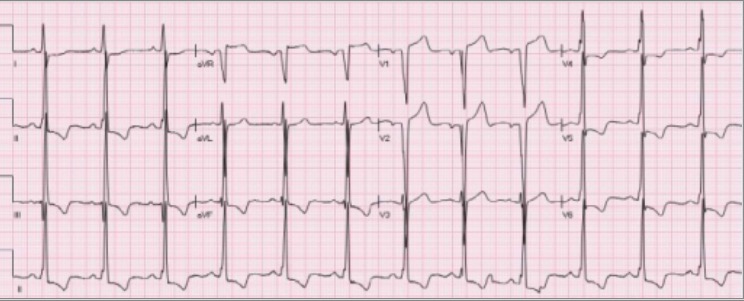Playlist
Show Playlist
Hide Playlist
Hypertension: Diagnosis
-
Slides Hypertension ChronicCare.pdf
-
Download Lecture Overview
00:01 All right. 00:01 Now, we’re going to discuss hypertension, which is one of the most common diagnosis in my practice. 00:06 And unfortunately, across the United States, hypertension is getting more common as our population ages and also gets heavier. 00:14 So, it’s really important to understand hypertension, its diagnosis and management. 00:19 And that’s exactly what we’re about to do. 00:21 So, let’s start with a case. 00:22 I’ve got a 51-year-old female, no past medical history and taking no medications. 00:27 Good for you. 00:28 But her blood pressure today is 146/90 and her pulse is 86 bpm. 00:34 The rest of her physical examination is unremarkable. 00:37 So, what's the next best step in her care? Should we talk about lifestyle changes and recheck her blood pressure in one to two weeks? Or we should start her on a thiazide diuretic? Start an ACE inhibitor or angiotensin receptor blocker? Or is her blood pressure actually within normal limits, and therefore, we can just see her next year for another wellness examination? What would you choose? Now, the answer is A. 01:01 And it's pretty clearly A in this case because remember that the diagnosis of hypertension requires a blood pressure reading of 130/80 mm or more on at least two separate occasions. 01:13 Now, the number may be a little bit controversial. 01:16 You'll see different recommendations from different groups, but 130/90 is generally the consensus now, and it’s certainly the consensus broadly that it has to be measured on at least two occasions. 01:28 So, it's best if the patient can do some testing at home. 01:31 Home blood pressure is more correlated than office blood pressure with cardiovascular events like stroke and myocardial infarction and if they can vary the time, morning and night, on both arms. 01:44 In terms of practicality and can a lot of patients do that? Some can, some cannot. 01:51 You want to see a blood pressure that's high in both your office setting and the home setting. That’s validating. 01:59 And one thing we can do as physicians is there is some value in doing both sitting and standing blood pressure in both arms in the office. 02:08 And that gives a slightly truer reading, and therefore, a higher accuracy for their future risk of cardiovascular events. 02:17 So, remember that among patients who are older than 60 years, and this is a controversial idea, but it's part of what the Joint National Commission 8 recommended for blood pressure that their blood pressure can be allowed to increase up to 149 mmHg safely. 02:36 Certainly, we see older adults getting in trouble with too aggressive a treatment of blood pressure. 02:43 And particularly, in my practice, patients over 80 years old, those who might be a little bit more frail, who may be 61 years old, but they may be 41 years old, if they’re very frail, I get nervous about trying to push their blood pressure towards those normal 120 systolic levels and they may be allowed to go up a little bit. 03:05 That said, I've got 85-year-olds who are very vital and active. 03:09 And for them, I maintain that blood pressure target of less than 130. 03:14 So, it's really I think up to you and your individual patient. 03:18 The age provides a basic guideline, but it's more about the risk of pushing your patient too low with their blood pressure for that individual patient and how frail they are. 03:29 Now, and the JNC 8 no longer recommends that the systolic blood pressure be treated at less than 130 mmHg among patients with diabetes or with chronic kidney disease.
About the Lecture
The lecture Hypertension: Diagnosis by Charles Vega, MD is from the course Chronic Care.
Included Quiz Questions
Which of the following best defines hypertension?
- Systolic blood pressure ≥ 130 mmHg and/or diastolic blood pressure ≥ 80 mmHg
- Systolic blood pressure ≥ 140 mmHg and/or diastolic blood pressure ≥ 70 mmHg
- Systolic blood pressure ≥ 135 mmHg and/or diastolic blood pressure ≥ 85 mmHg
- Systolic blood pressure ≥ 140 mmHg and/or diastolic blood pressure ≥ 80 mmHg
- Systolic blood pressure ≥ 130 mmHg and/or diastolic blood pressure ≥ 70 mmHg
Which method and setting of blood pressure measurement most accurately predicts target-organ damage?
- Home blood pressure monitoring while seated
- Office blood pressure monitoring while seated
- Home blood pressure monitoring while standing
- Office blood pressure monitoring while standing
- Blood pressure monitoring in hospitalized patients
Which of the following best defines hypertension?
- Elevated systolic and/or diastolic blood pressure on at least 2 separate occasions
- Elevated systolic and diastolic blood pressure on at least 3 separate occasions
- Elevated systolic and diastolic blood pressure on at least 1 separate occasion
- Elevated systolic and/or diastolic blood pressure on at least 4 separate occasions
- Elevated systolic blood pressure on at least 5 separate occasions
Which systolic blood pressure is the cut-off for a diagnosis of hypertension?
- 130 mm Hg
- 120 mm Hg
- 150 mm Hg
- 135 mm Hg
- 110 mm Hg
Customer reviews
5,0 of 5 stars
| 5 Stars |
|
5 |
| 4 Stars |
|
0 |
| 3 Stars |
|
0 |
| 2 Stars |
|
0 |
| 1 Star |
|
0 |




